#Maximilian II. Joseph
Explore tagged Tumblr posts
Text
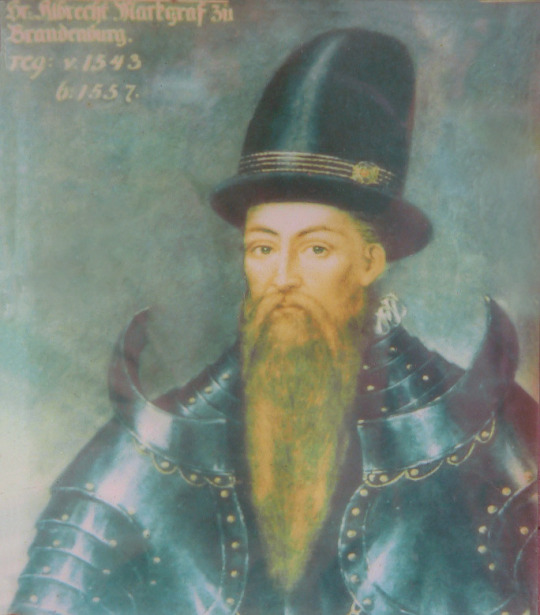
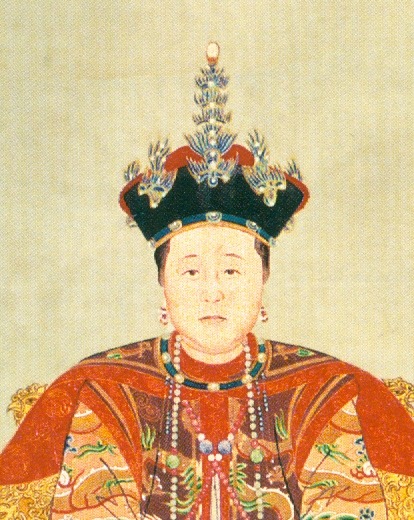
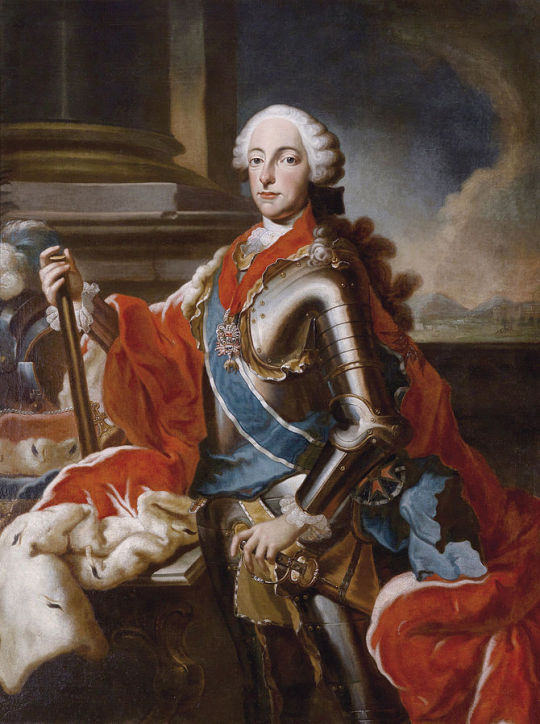

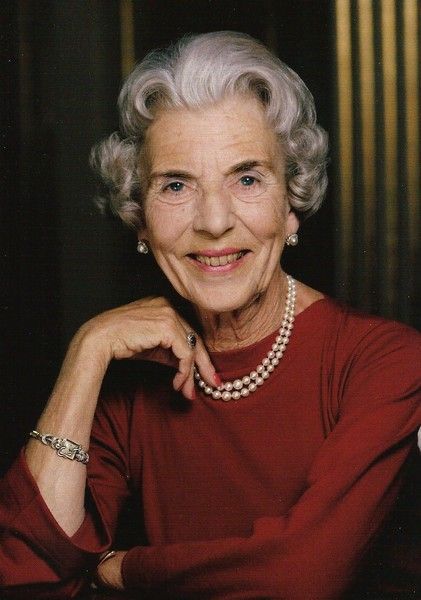
Royal Birthday for today, March 28th:
Albert Alcibiades, German Prince, 1522
Empress Dowager Zhaosheng, Empress Dowager of the Qing dynasty, 1613
Maximilian III Joseph, Elector of Bavaria, 1727
Märtha of Sweden, Crown Princess of Norway, 1910
Ingrid of Sweden, Queen of Denmark, 1910
#albert ii#Empress Dowager Zhaosheng#Maximilian III Joseph#martha of sweden#ingrid of sweden#long live the queue#royal birthdays
12 notes
·
View notes
Text

Marie, Crown Princess of Bavaria
Artist: Joseph Karl Stieler (German, 1781–1858)
Date: 1843
Medium: Oil painting
Collection: Nymphenburg Palace, Munich, Germany
Marie of Prussia
Marie of Prussia (German: Marie Friederike Franziska Auguste Hedwig von Preußen; 15 October 1825 – 17 May 1889) was Queen of Bavaria by marriage to Maximilian II of Bavaria, and the mother of Kings Ludwig II and Otto of Bavaria.
#royal princess#portrait#painting#half length#oil painting#fine art#crown princess of bavaria#german royalty#white dress#red cape#pearl necklace#house of hozenzollem#house of wittelsbach#german empire#german history#artwork#german culture#german art#joseph karl stieler#german painter#european art#19th century painting
43 notes
·
View notes
Text
Someone should truly speak bout the “later wife effect” that seems to have haunted historical figures since times long forgotten.
To break it down to you, what I call the “later wife effect” occurs when a male historical figure suddenly looses his beloved wife (most of the times, his first one) in an untimely and tragic manner -either by a childbirth gone wrong, an accident or a sudden illness-, turning the once mirthful husband into a grief-stricken widower. Perhaps because he lacks succession from said wife, because he has to provide spares to his heir, or even because an alliance is needed, he is forced to marry again; but the love never arises fully, their marriage turns into a bound of duty, and no matter what she does, or how loved she is outside their marriage: the later wife will forever be under the shadow of the first, a perfect idol, immortalised by her early death.
The “later wife effect” knows various levels:
In 1673, Leopold I, Holy Roman Emperor, lost his beloved Margaret Theresa when she was yet to turn twenty two and with child. Their seven years of union had produced four children, but only a daughter lived when Margaret Theresa died, and he went on to marry twice again; and even though he would sorrowfully remark that neither Claudia Felicitas of Austria or Eleonore Magdalene of Neuburg, his following brides, were “not like my only Margaretha”, his marriages were remarkably happy and so was he. This could be one of the mildest examples.
The middle ground would be when the marriage with the later wife is dutiful and polite, but loveless. Frederick William II of Hesse married Alexandra Nikolaevna, but soon lost her due to complications of childbirth. He would remarry nine years later to the beautiful and lively Anna of Prussia, and even though they eventually had six children, their marriage was notably cold and unhappy. Leopold I of Belgium widowed of his wife, Charlotte of Wales, soon after she gave birth to a dead son; fifteen years later, know king of Belgium, he took Louise-Marie of Orléans hand in marriage; she was shy, delicate, witty and partook in many charitable causes, earning the love of the Belgians, and the respect of her husband, with whom she had a fruitful and tranquil union; but Leopold would not be faithful to her, committing adultery with a much younger Arcadie Claret, who was said to resemble the long gone princess Charlotte. She perished a year after he had a son with Claret, and her dead did not stop the relationship between the two of them.
More unhappy cases of this effect would be those of Maximilian I, Holy Roman Emperor, and his descendant, Joseph II. When still an archduke, Maximilian married Mary of Burgundy and loved her much, a love so legendary it lived through generations in the art commissioned by their descendants. But the fairytale would come to an abrupt end when, after five years of marriage, Mary would find her untimely dead while pregnant with their fourth child, after her horse threw her off the saddle. Maximilian was most heartbroken and, after a failed marriage attempt with the young duchess Anne of Brittany, he would wed Bianca Maria Sforza. The empress from Milan was deemed “more beautiful than Mary” by Maximilian, but neither her beauty not her many charms of her would soften his callous attitude towards his wife. Having endured a miscarriage during the first months of their union, Bianca Maria, the once most sought after princess in Europe, had become a ghost in her own court, severely neglected by her husband, who refused to attend to her own funeral nor dedicate a gravestone for her. Similarly, after the traumatic passing of his wife, Isabella of Parma, Joseph II was forced to remarry to Maria Josepha of Bavaria, who he did not found as attractive as the late archduchess. He grew so disgusted of her that the same devoted husband that has been by Isabella’s bedside now commanded to put a wall between his balcony and hers, so that he could not see her, distressing old servants in the palace so much with his cold attitude that some left. When, after two years of marriage, her life was robbed by smallpox -the same ailment that had taken Isabella’s life four years before-, Joseph declared she had been worthy of respect and that he repented his coldness. However, he refused to visit her bedside and did not appear during her burial.
This should not be confused with what I call “the younger wife effect”, which takes place when a widowed historical figure, who had long remained unwed by choice, suddenly takes marriage to a beautiful and much younger person that is described to bring happiness to his once lonely and dull life. This would perfectly be exemplified with prince Maximilian of Saxony’s marriage with princess Maria Luisa Carlota of Parma, almost twenty one years since the passing of his wife (princess Carolina of Parma) or Edward I’s marriage to Marguerite of France.
18 notes
·
View notes
Text
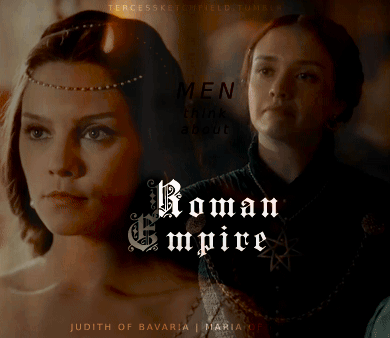
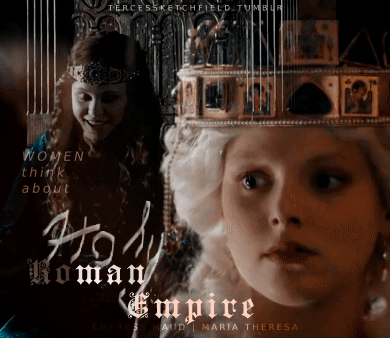
MEN THINK ABOUT ROMAN EMPIRE. WOMEN THINK ABOUT HOLY ROMAN EMPIRE
JUDITH OF BAVARIA (797-843) — Daughter of Count Welf I of Bavaria, Judith was a Carolingian Empress as the second wife of Louis I the Pious. Mother of Gisela and Charles the Bald, she foght for both her own influence at court and for the succession of her son over the claims of his elder half-brothers, the sons of Louis I from his first marriage. Charles became the Emperor in 875, after the death of Louis II, his nephew and a son of his half-brother Lothair / fancast: Annabel Scholey
MARIA OF AUSTRIA (1528-1603) — Daughter of Charles V, Holy Roman Emperor, and Isabella of Portugal. She served as Regent of Spain both jointly with her husband, Maximilian (before their accession to the imperial throne), and in person, for her father, and brother, Philip II. Her children include two Holy Roman Emperors, Rudolf II and Matthias, over whom she held great influence, and queens consorts of Spain, and France / fancast: Olivia Cooke
EMPRESS MAUD (1102-1167) — Daughter of Henry I of England and Matilda of Scotland. Her first marriage to the Holy Roman Emperor, Henry V, gave her the title under which she came down into history, and was a source of great pride to Maud. Rightful heiress of Henry I, she confronted her cousin, King Stephen, in the civil war, known as the Anarchy, fighting ferociously for her rights. She failed in this for herself but won for her son Henry, who became king and established the Plantagenet dynasty in England / cast: Alison Pill in The Pillars of the Earth (2010)
MARIA THERESA (1717-1780) — She succeded her father Charles VI as the ruler of Habsburg monarchy in 1740, and devoutedly defended it against its enemies in the War of Austrian Succession and the Seven Year's War. Wife of the Holy Roman Emperor, Francis I, she was a forceful personality and a competent ruler herself, reigning first in her own right, and later, jointly with her son Empreror Joseph II. Her children include two Holy Romam Emperors (Joseph II and Leopold II), queens consorts of Naples ans Sicily, and France / cast: Marie-Luise Stockinger in Maria Theresia (2017)
#historyedit#judith of bavaria#maria of austria#empress maud#empress matilda#maria theresa#maria theresia#perioddramaedit#history#women in history#perioddramasource#onlyperioddramas#tusereliza#userbennet#usermina#weloveperioddrama#cortegiania#perioddramagif#gifshistorical#my edit#*i have literally zero idea what is this lmao* but i really like it idk
144 notes
·
View notes
Text
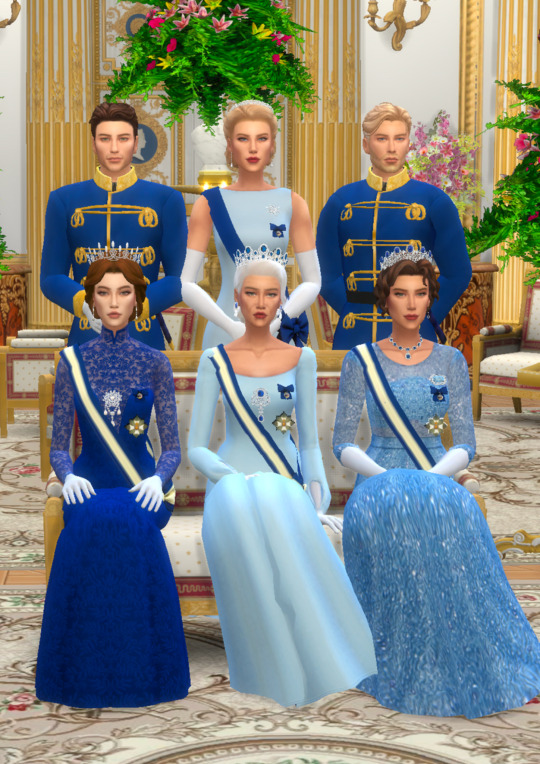

The Grand Ducal Family of Bauden
Presiding over the last Germanic Sate is the Hessian Ruler, Maximillian III, the Grand Duke of Bauden. His Serene Highness became Grand Duke in 2009, after the death of his father Henrich II.
The Grand Duke married his wife the Grand Duchess Alexandra, nee Princess of Battenberg in 1997, at the Cathedral of the Holy Mother, in a Catholic ceremony, witnessed by the Pope. Together the royal couple have two children Nicholas, the Hereditary Grand Duke of Bauden (b.1998) and Duchess Catherina (b.2000).
In 2021, Nicholas was wed to HH Princess Marina of Sicily, at the same Cathedral his parents were wed 24 years prior. Together the Hereditary Grand Duke and Duchess have two children, Duke Wilhelm-Joseph (b.2021) and Duchess Josephine (b.2024).
The final member of the Grand Ducal Family is the Grand Duke’s mother, Her Serene and Royal Highness, Amalia, the Dowager Grand Duchess of Bauden, Princess of the Hellenes .
Standing (L-R) Nicholas, Catherina and Maximilian
Seated(L-R) Marina, Amalia and Alexandra
#theroyalsofcorrilea#ts4 royalty#ts4 royal family#sims 4 royalty#the sims 4#ts4 royal story#sims 4#sims 4 royal family#sims 4 royal simblr#sims 4 royal legacy#sims royal family
32 notes
·
View notes
Text
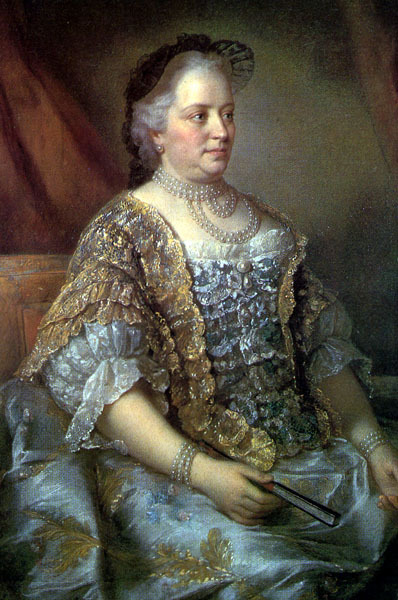
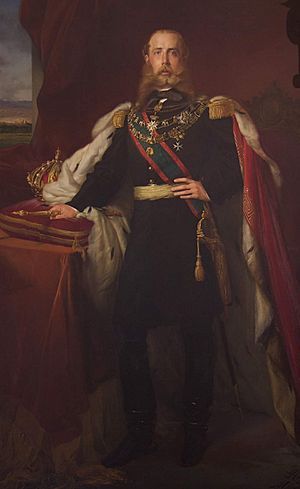
Maria Theresa, Archduchess of Austria, Queen of Hungary, Croatia and Bohemia, etc. reigned 1740-1780
The empress who reformed the empire while having a ton of children at the same time.
Maximilian , Emperor of Mexico, reign: 1864-1867
The last emperor of Mexico who supported liberal reform against the desires of Mexican conservatives.
Propaganda under the cut:
Maria Theresa:
From anon:
- chucked into ruling at age 23. while pregnant
- no prep!!!! Prussia invades Silesia!!! Ministers fucking around for their own provincial interests instead of for the Whole !!!!! and she has to somehow cope with all of this ....
- ALL WHILE being pregnant with Joseph (II) and we know that guy was just as ornery in utero as he was irl
- she's everything! He (Francis) is just ....Ken.
- YAS QUEEN rediversify that gene pool
- originally reluctant to participate in the 1st partition of poland (who wants galicia let's be real)
Maximilian
From: anon
- He loved plants
- He was a sassy man
- He had good taste
- He learned Nahuatl
- He’s cute (I mean look at him)
- He said “gay rights”
- He banned child labour in Mexico
- He gave many rights back to indigenous people
- Bro was wronged by France (haven’t we all?)
- He’s baby
- Got executed, come on, give him this guys 🥺
- He loved to design gardens and collect insects which makes me think he would've loved playing animal crossing
- An outspoken liberal in a period where the monarchy was still quite conservative.
- Vice-Admiral of the Navy who initiated scientific projects and exploration.
- Aesthetic girlie. Collected flowers, painted, wrote poetry, and kept a journal. He would have loved Tumblr.
- (Probably) gay or bisexual.
- Allegedly slapped Franz Joseph for refusing to allow Lombardy to have an elective body.
- Sisi's favorite brother-in-law (and not in a romantic way, fuck you Netflix)
- Refused to take the Mexican crown until a plebiscite had been held because he wanted to be invited by the Mexican people.
- Gave up all of his Austrian titles to go to Mexico because he believed he had made a promise to them.
- Also, his wife was amazing and capable and the amount of pure misogyny that certain historians and biographers have thrown at her is ridiculous. I know this isn't a Carlota poll, but she'd want Max to win.
- Netflix did him unbelievably dirty. Please give him this.
Did you know my man Max repatriated many pieces of Mexica artefacts?
He told Austria to cough up 3 main things that he thought were rightfully Mexican.
1. The Chimalli
2. A codex
3. A letter from Cortez to the chocolate man people seem to call Charles
The Austrians took their time but eventually gave back something
The Chimalli next to max so people know who to thank for it
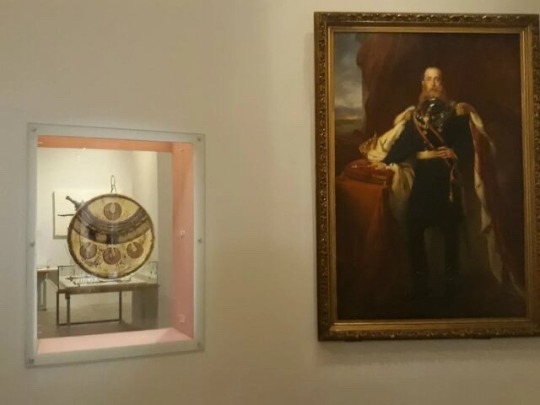
65 notes
·
View notes
Text
Women of Imperial Russia: Ages at First Marriage
I have only included women whose birth dates and dates of marriage are known within at least 1-2 years, therefore, this is not a comprehensive list. This data set ends with the Revolution of 1917.
Eudoxia Lopukhina, wife of Peter I; age 20 when she married Peter in 1689 CE
Catherine I of Russia, wife of Peter I; age 18 when she married Johan Cruse in 1702 CE
Anna of Russia, daughter of Ivan V; age 17 when she married Frederick William Duke of Courland and Semigallia in 1710 CE
Anna Petrovna, daughter of Peter I; age 17 when she married Charles Frederick I, Duke of Holstein-Gottorp, in 1725 CE
Catherine II, wife of Peter III; age 16 when she married Peter in 1745 CE
Natalia Alexeievna, wife of Paul I; age 17 when she married Paul in 1773 CE
Maria Feodorovna, wife of Paul I; age 17 when she married Paul in 1776 CE
Elizabeth Alexeivna, wife of Alexander I; age 14 when she married Alexander in 1793 CE
Anna Feodorovna, wife of Konstantin Pavlovich; age 15 when she married Konstantin in 1796 CE
Alexandra Pavlovna, daughter of Paul I; age 16 when she married Archduke Joseph of Austria in 1799 CE
Elena Pavlovna, daughter of Paul I; age 15 when she married Frederick Louis, Duke of Mecklenburg-Schwerin in 1799 CE
Maria Pavlovna, daughter of Paul I; age 18 when she married Charles Frederick, Grand Duke of Saxe-Weimar-Eisenach in 1804 CE
Catherine Pavlovna, daughter of Paul I; age 21 when she married Duke George of Oldenburg in 1809 CE
Anna Pavlovna, daughter of Paul I; age 21 when she married William II of the Netherlands in 1816 CE
Alexandra Feodorovna, wife of Nicholas I; age 19 when she married Nicholas in 1817 CE
Joanna Grudzinska, wife of Konstantin Pavlovich; age 29 when she married Konstantin in 1820 CE
Elena Pavlovna, wife of Mikhail Pavlovich; age 17 when she married Mikhail in 1824 CE
Maria Nikolaevna, daughter of Nicholas I; age 20 when she married Maximilian de Beauharnais, Duke of Leuchtenberg, in 1839 CE
Maria Alexandrovna, wife of Alexander II; age 17 when she married Alexander in 1841 CE
Elizaveta Mikhailovna, daughter of Mikhail Pavlovich; age 17 when she married Adolphe, Grand Duke of Luxembourg, in 1844 CE
Alexandra Nikolaevna, daughter of Nicholas I; age 19 when she married Prince Frederick-William of Hesse-Kassel, in 1844 CE
Olga Nikolaevna, daughter of Nicholas I; age 24 when she married Charles I of Wurttemberg, in 1846 CE
Alexandra Iosifovna, wife of Konstantin Nikolaevich; age 18 when she married Konstantin in 1848 CE
Catherine Mikhailovna, daughter of Mikhail Pavlovich; age 24 when she married Duke Georg August of Mecklenburg-Strelitz, in 1851 CE
Alexandra Petrovna, wife of Nicholas Nikolaevich the Elder; age 18 when she married Nicholas in 1856 CE
Olga Feodorovna, wife of Michael Nikolaevich; age 18 when she married Michael in 1857 CE
Maria Feodorovna, wife of Alexander III; age 19 when she married Alexander III in 1866 CE
Olga Konstantinovna, daughter of Konstantin Nikolaevich; age 16 when she married George I of Greece in 1867 CE
Vera Konstantinovna, daughter of Konstantin Nikolaevich; age 20 when she married Duke Eugen of Wurttemberg in 1874 CE
Maria Pavlovna, wife of Vladimir Alexandrovich; age 20 when she married Vladimir in 1874 CE
Maria Alexandrovna, daughter of Alexander II; age 19 when she married Alfred, Duke of Edinburgh, in 1874 CE
Anastasia Mikhailovna, daughter of Michael Nikolaevich; age 19 when she married Friedrich Franz III, Duke of Mecklenburg-Schwerin in 1879 CE
Nadezhada Alexandrovna Dreyer, wife of Nicholas Konstantinovich; age 21 when she married Nicholas in 1882 CE
Elizabeth Feodorovna, wife of Sergei Alexandrovich; age 20 when she married Sergei in 1884 CE
Olga Valerianovna Paley, wife of Paul Alexandrovich; age 19 when she married Erich von Pistolhkors in 1884 CE
Elizabeth Mavrikievna, wife of Konstantin Konstantinovich; age 19 when she married Konstantin in 1885 CE
Anastasia of Montenegro, wife of Nicholas Nikolaevich the Younger; age 21 when she married George Maximilianovich, Duke of Leuchtenberg in 1889 CE
Milica of Montenegro, wife of Peter Nikolaevich; age 23 when she married Peter in 1889 CE
Alexandra of Greece and Denmark, wife of Paul Alexandrovich; age 19 when she married Paul in 1889 CE
Sophie Nikolaievna, wife of Michael Mikhailovich; age 23 when she married Michael in 1891 CE
Victoria Feodorovna, wife of Kirill Vladimirovich; age 18 when she married Ernest Louis, Grand Duke of Hesse, in 1894 CE
Xenia Alexandrovna, wife of Alexander Mikhailovich; age 19 when she married Alexander in 1894 CE
Alexandra Feodorovna, wife of Nicholas II; age 22 when she married Nicholas in 1894 CE
Olga Alexandrovna, daughter of Alexander II; age 18 when she married Count George-Nicholas von Merenberg in 1985 CE
Maria of Greece and Denmark, wife of George Mikhailovich; age 24 when she married George in 1900 CE
Alexandra von Zarnekau, wife of George Alexandrovich; age 16 when she married George in 1900 CE
Catherine Alexandrovna, daughter of Alexander II; age 23 when she married Alexander Baryatinksy in 1901 CE
Olga Alexandrovna, daughter of Alexander III; age 19 when she married Duke Peter Alexandrovich of Oldenburg
Elena Vladimirovna, daughter of Vladimir Alexandrovich; age 20 when she married Prince Nicholas of Greece and Denmark in 1902 CE
Natalia Brasova, wife of Michael Alexandrovich; age 22 when she married Sergei Mamontov in 1902 CE
Elisabetta di Sasso Ruffo, wife of Andrei Alexandrovich; age 31 when she married Alexander Alexandrovitch Frederici in 1907 CE
Maria Pavlovna, daughter of Paul Alexandrovich; age 18 when she married Prince Wilhelm of Sweden in 1908 CE
Helen of Serbia, wife of Ioann Konstantinovich; age 27 when she married Ioann in 1911 CE
Tatiana Konstantinovna, daughter of Konstantin Konstantinovich; age 21 when she married Konstantine Bagration of Mukhrani, in 1911 CE
Irina Alexandrovna, daughter of Alexander Mikhailovich; age 19 when she married Felix Felixovich Yusupov in 1914 CE
Nadejda Mikhailovna, daughter of Michael Mikhailovna; age 20 when she married George Mountbatten in 1916 CE
Antonina Rafailovna Nesterovkaya, wife of Gabriel Konstantinovich; age 27 when she married Gabriel in 1917 CE
Nadejda Petrovna, wife of Nicholas Orlov; age 19 when she married Nicholas in 1917 CE
Anastasia Mikhailovna, daughter of Michael Mikhailovna; age 25 when she married Sir Harold Wernher in 1917 CE
59 women; average age at first marriage was 20 years old. The oldest bride was 31 at her first marriage; the youngest was 14.
20 notes
·
View notes
Text

Olga Kalinovska, lady in waiting of Russian Court, first love of Tsarevich Alexander (future Alexander II). She was the daughter of a Polish official, Ossip (Joseph) Kalinovski, who remained loyal to Russia during the Polish insurrection of 1830.
Alexander wrote to his father: "You probably noticed my relation with O.K. You and I had a conversation last winter a coeur. . . . Feelings which I have for her are feelings of a pure and real love, of attachment and respect. This increased every day and now continues. But the thought that this will lead to nowhere does not leave me. Just to the contrary, it tortures me more and more, and therefore I become dull and sad. I can't contain my tears." Nicholas I answered: "I love Ossipovna and love her as a charming girl. I will not blame her that she unwillingly roused in you feelings of love. From that point be quite at ease."
Alexandra Andreevna Tolstaya wrote about Olga: "The first fire in him was lit by the beautiful eyes of Olga Kalinovskaya, the lady-in-waiting of his sister, the Grand Duchess Maria Nikolaevna. This young Polish lady, was educated in one of the institutes of St. Petersburg. Not possessing beauty, she was, as they say, insinuating and agile, and did not hesitate to turn the head of the future Emperor."
Grand Duchess Olga Nikolaevna described Olga Kalinovska in her memoirs: "She had large dark eyes, but without much expression; she ovned an undoubted charm, but of a cat-like nature, specific for Polish women, which especially affects men. In general, she was neither clever, nor sentimental, nor witty, and had no interests. Her behavior was impeccable and her relations with everyone were excellent, but she was friendly with no one. However, as an orphan, left without family advice to live in a society considered superficial and frivolous, she was bound to meet with sympathy. And papa, who treated young people with a fatherly warmth, pitied her with all his heart."
L. V. Doubelt remembered: "Our heir dreamed of Olga Kalinovskaya. It was terrible! Besides the fact that such a fine fellow, the son of such a father, such a kind and glorious man, could not afford such a wife, besides, she is Polish, of limited intelligence, akin to all Polish families, who have always been hostile to Russia, this could crush us."
So the decision was clear. Alexander was made ready to leave home for his European visit. During this visit he met his future wife, princess Maximiliane Wilhelmine of Hesse and by Rhine.
5 notes
·
View notes
Text
To continue with my research on the rooms of the winter palace, I would like to draw your attention to the rooms occupied by Grand Duchess Maria Nikolaevna (Eldest daughter of Tsar Nicholas I) and her husband, Maximilian Joseph Eugene Auguste Napoleon de Beauharnais, 3rd Duke of Leuchtenberg. Also known as the 1st Reserved Apartment, this suite of 11 rooms (rooms 301-290) is located at the end of the Dark Corridor of the private apartments and runs along the inner courtyard side of the southwestern and southern wings (rooms above the famous Gates of the Palace). The couple were married on 2 July 1839 in the Grand Church of the Winter Palace. As Tsar Nicholas I's eldest and favourite child, she was given this suite of rooms following her marriage to the Duke as they waited construction of her own Palace which was completed in 1844 (known today as the Mariinsky Palace in St. Petersburg).


Room 167 - Small Fieldmarshal Hall
This room was used for the ceremonial change of the Palace guards. It allowed access to the 1st Reserved apartment (door located behind the view of the screenshot) and the apartments of future Tsarina Maria Alexandrovna, wife of Alexander II (doors shown in picture).
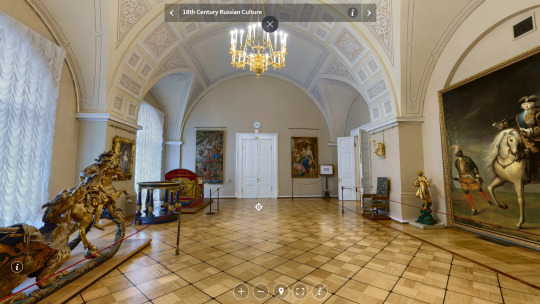

Room 301- Anteroom of the 1st Reserved Apartment
No paintings exist for this room but it served to received guests into the apartment suite.
Room 300- Small Study of Grand Duchess Maria
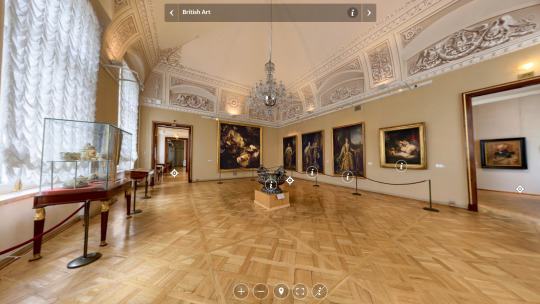
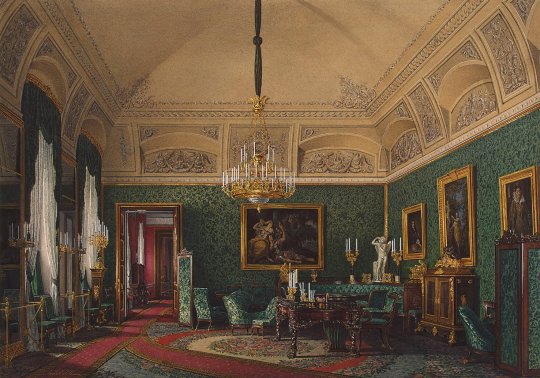
Room 299- Grand Duchess Maria's Dressing Room
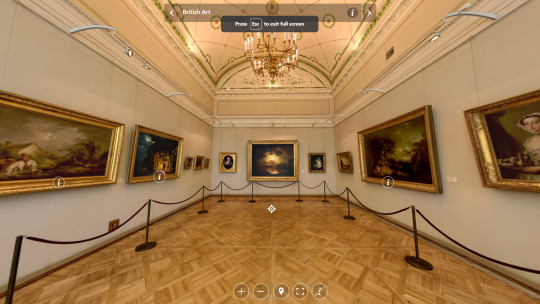

Room 298- The Duke and Grand Duchess' Bedroom
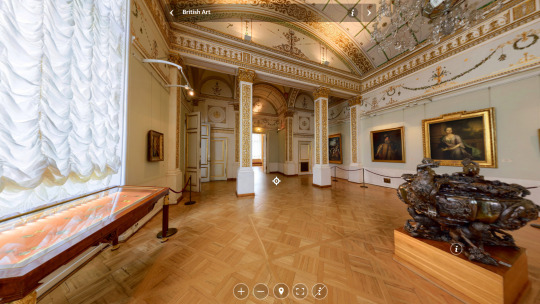

Room 297- The Duke of Leuchtenberg's Dressing Room
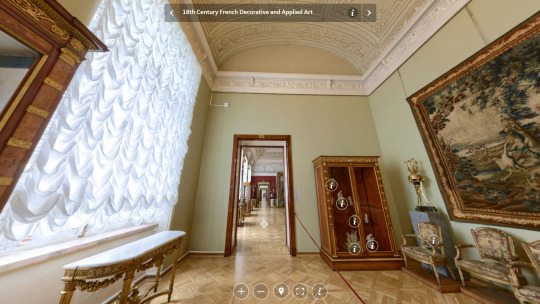

296- Large Study of Grand Duchess Maria
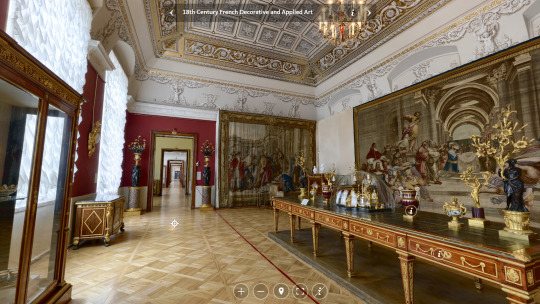

Room 295- Yellow Salon of Grand Duchess Maria
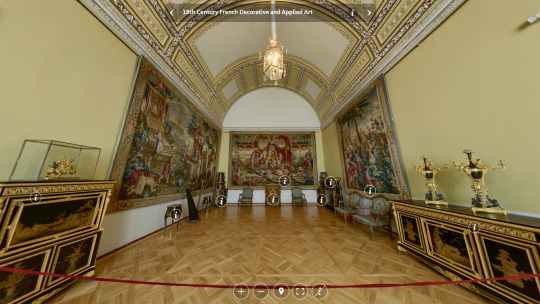

Room 294- 1st Reserved Apartment Drawing-Room
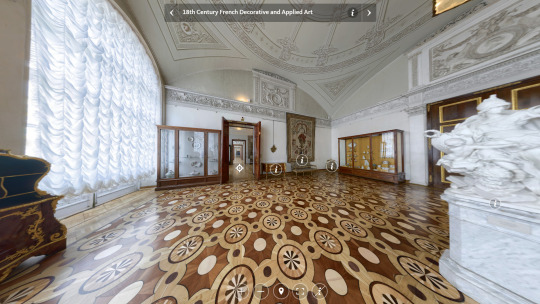
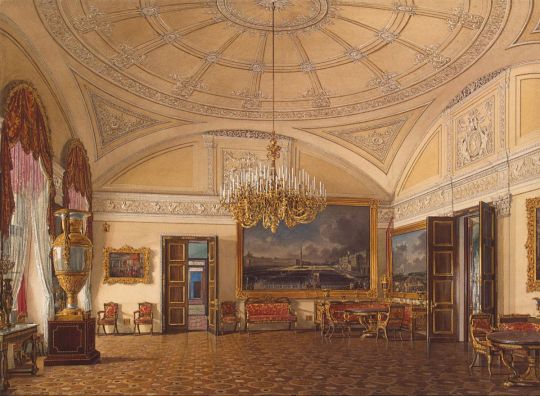
Room 293- The Salon of the Duke of Leuchtenberg
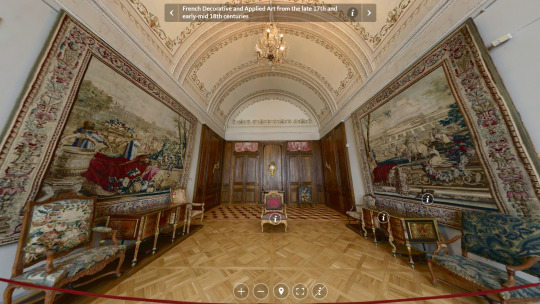

Room 292- Drawing-Room of the Duke of Leuchtenberg
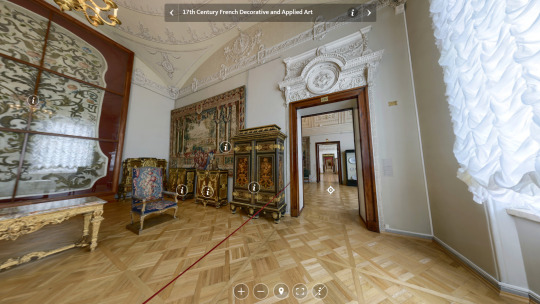
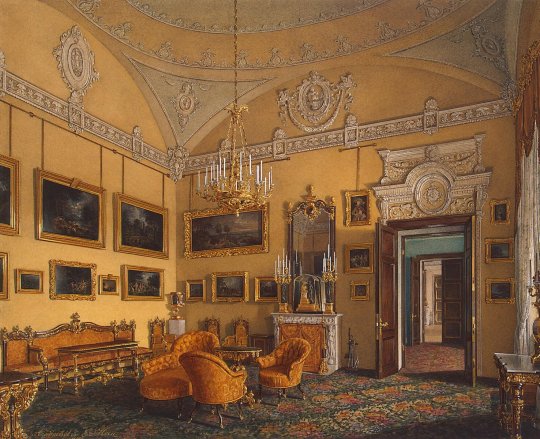
Room 291- The Study of the Duke of Leuchtenberg
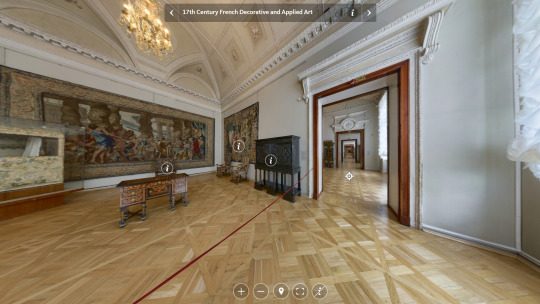

Room 290- The Duke’s Valet/Wardrobe
This room was for the Duke's valet or manservant who tended to the Duke's clothes.
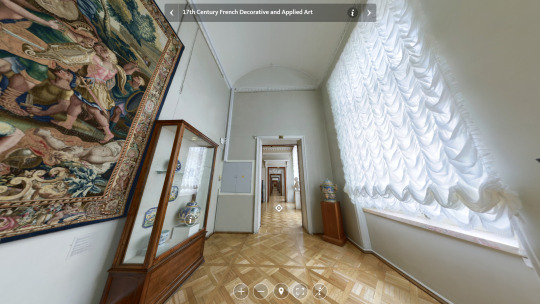
17 notes
·
View notes
Note
Hi my friend 👋, Who is your favorite Habsburg King? One for Austria and One for Spain?
Who is your least Favorite king of all time? I wish you the best.
HIIII !! how good is to receive an ask just the moment i was thinking about going to random dms to infodump people about random hyperfixations . specially from you my friend im wishing you the best too .
I really like habsburg story as it is full of girlbosses and malewifes ( a really cool dynasty ) . IIIII i really like the austrian ones , spaniards are always a mystery to me . I lived there for four years and I still dont catch their accent . My favourite habsburg monarch is emperor Franz II im not normal about him . there is an strong need to scream everytime i think about him . People probably must known him more for the napoleonic wars but I think he is very interesting by his own right . But tbh I really like all habsburgs from Austria they are very babygirls . Maximilian I , Charles V , Ferdinand I , Rudolf II , Leopold I , Charles VI , Marie Theresia , Joseph II and Ferdinand I of Austria ( not to confuse him with Ferdinand I of the Holy Roman Empire ) are my favourites but I really like all of them except for Leopold II and Francis I ( i have a love-hate relationship with him bc he is funny but I hate that he wasnt faithful to Marie Theresia bc !! SHE WAS LITERALLY A 10 ?! ) . From Spain I truly only like Felipe I and Carlos II . The other ones are very boring to me but I get that Felipe II was interesting . I am not mentioning Charles I because I already mentioned him as emperor . Well . He should be here because he is a spanish one yeah . so yeah he is also here i really like him i find him too funny and he was very babygirl . I mostly like infantes of Spain like the Cardinal-Infante Fernando de Austria , Don Juan José de Austria , Carlos de Austria ( son of Felipe II - prince of Asturias before Felipe III ) and Carlos de Austria ( brother of Felipe IV , I really like him !! I find him autistic and awkard asf and I really like that in people . Like Franz II ) . Those are my tastes in Habsburgs sadly I will try not to talk about the women too as to not make this too big but I also love their queens . Felipe IV is an enigma to me I find him incomprehensible . Truly a mystery like Spain itself . I liked that moment when Louis XIV and Philippe d'Orléans went to hug him and cry when they met to give Louis XIV his wife that was hilarious .
2.IIII I would say Henry VIII cus he is easy to hate but I do also hate Henry VII because he is the one who made my homecountry a mess ( Wales - if you ever see me talking weird english , is because its not my native language ! I speak welsh hehe ) . I really really hate Charles X of France because he ruined my favourite queer mentally ill dynasty ( bourbons ) and destroyed everything Louis XVIII worked for ( he is my !! favourite historical figure ever ) . I dont really hate many monarchs bc even if they are bad they are amusing to know about . The real hate I have to a historical figure is to Saint-Just but i completely agree with his ideas but he was a real asshole and i dont know how robespierre was friend of that guy . he was literally an edgy teen trying to be a politic is everything i hate about politics but worse because i agree with everything he said . except killing louis xvi that was a mistake . they should have put louis xvi in a box and send it to austria if they didnt wanted him there
#mariana ' s#HIIIII !! i have to send you more personal asks too#but i always fear that my tastes in history are too weird like who the fuck is louis xviii#i I HAVE SOME IDEAS may come back tomorrow to ask bc i need to go to sleep#see ya later#:3#<--- im always looking at your interactions like this but i am very bad at showing emotions on text
5 notes
·
View notes
Text
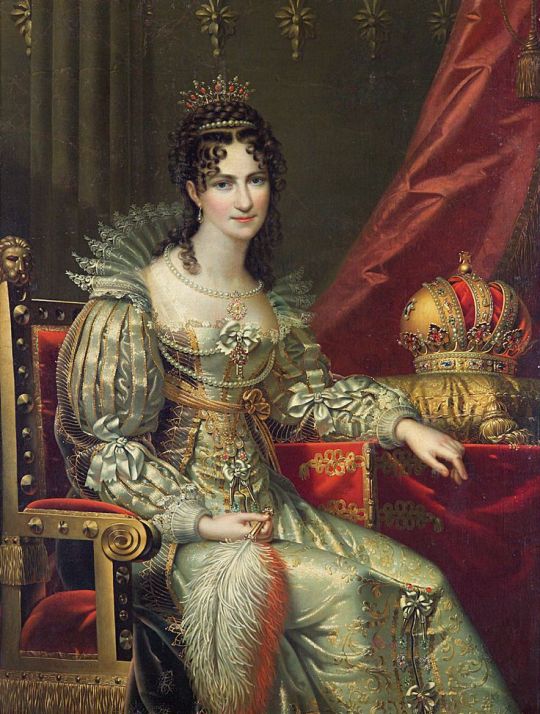
Empress Caroline Auguste of Bavaria, Wife of Francis II
Artist: Carl von Sales (German, 1791-1870)
Date: 1818
Medium: Oil on canvas
Collection: Kunsthistorisches Museum Vienna, Austria
Empress Caroline Auguste of Bavaria
Princess Caroline Augusta of Bavaria (German: Karoline Auguste; 8 February 1792 – 9 February 1873) was Empress of Austria by marriage to Francis I of Austria. She was the penultimate child and third daughter of King Maximilian I Joseph of Bavaria and Princess Augusta Wilhelmine of Hesse-Darmstadt. She firstly married to Crown Prince William of Württemberg in 1808, but they divorced in 1814.
#portrait#empress caroline auguste of bavaria#austrian empress#austrian culture#sitting#costume#royal crown#tiara#three quarter length#austrian history#painting#oil on canvas#19th century painting#carl von sales#german painter#german art#german culture#artwork#oil painting#european art
31 notes
·
View notes
Text
Events 7.26 (before 1940)
657 – First Fitna: In the Battle of Siffin, troops led by Ali ibn Abu Talib clash with those led by Muawiyah I. 811 – Battle of Pliska: Byzantine Emperor Nikephoros I is killed and his heir Staurakios is seriously wounded. 920 – Rout of an alliance of Christian troops from Navarre and Léon against the Muslims at the Battle of Valdejunquera. 1309 – The Holy Roman Emperor Henry VII is recognized King of the Romans by Pope Clement V. 1509 – The Emperor Krishnadevaraya ascends to the throne, marking the beginning of the regeneration of the Vijayanagara Empire. 1529 – Francisco Pizarro González, Spanish conquistador, is appointed governor of Peru. 1579 – Francis Drake, the English explorer, discovers a "fair and good" bay on the coast of the Pacific Northwest (probably Oregon or Washington). 1581 – Plakkaat van Verlatinghe (Act of Abjuration): The northern Low Countries declare their independence from the Spanish king, Philip II. 1703 – During the Bavarian Rummel the rural population of Tyrol drove the Bavarian Prince-Elector Maximilian II Emanuel out of North Tyrol with a victory at the Pontlatzer Bridge and thus prevented the Bavarian Army, which was allied with France, from marching as planned on Vienna during the War of the Spanish Succession. 1745 – The first recorded women's cricket match takes place near Guildford, England. 1758 – French and Indian War: The Siege of Louisbourg ends with British forces defeating the French and taking control of the Gulf of Saint Lawrence. 1775 – The office that would later become the United States Post Office Department is established by the Second Continental Congress. Benjamin Franklin of Pennsylvania takes office as Postmaster General. 1778 – The Emigration of Christians from the Crimea in 1778 begins. 1788 – New York ratifies the United States Constitution and becomes the 11th state of the United States. 1803 – The Surrey Iron Railway, arguably the world's first public railway, opens in south London, United Kingdom. 1814 – The Swedish–Norwegian War begins. 1822 – José de San Martín arrives in Guayaquil, Ecuador, to meet with Simón Bolívar. 1822 – First day of the three-day Battle of Dervenakia, between the Ottoman Empire force led by Mahmud Dramali Pasha and the Greek Revolutionary force led by Theodoros Kolokotronis. 1847 – Liberia declares its independence from the United States. France and the United Kingdom are the first to recognize the new nation. 1861 – American Civil War: George B. McClellan assumes command of the Army of the Potomac following a disastrous Union defeat at the First Battle of Bull Run. 1863 – American Civil War: Morgan's Raid ends; At Salineville, Ohio, Confederate cavalry leader John Hunt Morgan and 360 of his volunteers are captured by Union forces. 1882 – Premiere of Richard Wagner's opera Parsifal at Bayreuth. 1882 – The Republic of Stellaland is founded in Southern Africa. 1887 – Publication of the Unua Libro, founding the Esperanto movement. 1890 – In Buenos Aires, Argentina the Revolución del Parque takes place, forcing President Miguel Ángel Juárez Celman's resignation. 1891 – France annexes Tahiti. 1892 – Dadabhai Naoroji is elected as the first Indian Member of Parliament in Britain. 1899 – Ulises Heureaux, the 27th President of the Dominican Republic, is assassinated. 1908 – United States Attorney General Charles Joseph Bonaparte issues an order to immediately staff the Office of the Chief Examiner (later renamed the Federal Bureau of Investigation). 1918 – Emmy Noether's paper, which became known as Noether's theorem was presented at Göttingen, Germany, from which conservation laws are deduced for symmetries of angular momentum, linear momentum, and energy. 1936 – Spanish Civil War: Germany and Italy decide to intervene in the war in support for Francisco Franco and the Nationalist faction. 1937 – Spanish Civil War: End of the Battle of Brunete with the Nationalist victory.
2 notes
·
View notes
Text

Trieste - Sant’Antonio Taumaturgo - 1849
1711 - 1740: Karl VI Kaiser
1719: erklärte Kaiser Karl VI. Triest zum Freihafen, wodurch es von Zöllen befreit wurde. Unter Maria Theresia (1740–1780) und Joseph II. (1780–1790) wurde Triest weiter gefördert.
1774: Die Leiden des jungen Werther (Goethe). Werther verliebt sich in Charlotte (Lotte), die jedoch bereits mit Albert verlobt ist. Seine universellen Themen, psychologische Tiefe und sprachliche Schönheit machen es zu einem zeitlosen Werk, das bis heute Menschen anspricht und inspiriert. Der Stil war emotional, bildreich und von einer Intensität, die im Kontrast zu den rationalistischen und klassischen Texten der Aufklärung stand. In Werther wird die Natur als Spiegel der Seele des Protagonisten dargestellt, was ein zentrales Motiv des Sturm und Drang ist. Die Aufklärung betonte Rationalität, Moral und gesellschaftliche Werte. Werke dieser Epoche waren oft didaktisch und aufklärerisch.
1781: Kritik der reinen Vernunft (Kant)
1797: nach den Napoleons Besetzung, mit dem Frieden von Campo Formio fiel die Region Venetien, einschließlich Triests, vorübergehend an Österreich zurück.
1807: Phänomenologie des Geistes (Hegel)
1808: Fichte schrieb Reden an die deutsche Nation im Jahr 1808 als Reaktion auf die französische Besetzung durch Napoleon. Die Romantik wollte die nationalen Traditionen wiederbeleben und betonte die Geschichte des Mittelalters sowie die Prinzipien von Gefühl und Identität im Gegensatz zu Internationalismus, Neoklassizismus und der Aufklärung des vorherigen Jahrhunderts.
1815–1848: Ära des Fürsten Metternich, geprägt von konservativer Politik und Restauration nach dem Wiener Kongress.
1833: Triest wurde zum Sitz der österreichischen Lloyd-Gesellschaft, einer der wichtigsten Schiffahrtsgesellschaften Europas.
1848: Revolutionen in Europa; Metternich tritt zurück. Franz Joseph I. wird Kaiser. Der Romantizismus in Deutschland endete etwa um 1848, als die politischen, gesellschaftlichen und wirtschaftlichen Veränderungen neue literarische und kulturelle Schwerpunkte setzten. Die Bewegung wurde schrittweise vom Realismus abgelöst, der die gesellschaftliche Realität stärker in den Vordergrund stellte. Dennoch hinterließ die Romantik einen nachhaltigen Einfluss auf Kunst (Friedrich), Musik (Wagner) und Literatur, der bis ins 20. Jahrhundert nachwirkte.
1856: Maximilian war der Bruder von Kaiser Franz Joseph. Er ließ das Schloss Miramare im Jahr 1856 erbauen, bevor er nach Mexiko ging, um auf Einladung Napoleons III. Kaiser zu werden. Dort wurde er jedoch von den Republikanern unter Benito Juárez hingerichtet.
1866: Die Industrialisierung war eine wesentliche Ursache für den preußischen Sieg in der Schlacht bei Sadowa, insbesondere durch technologische Fortschritte wie das Zündnadelgewehr und die Eisenbahnlogistik.
1885: Also sprach Zarathustra (Friedrich Nietzsche). Der Décadentismus entstand aus der Kombination philosophischer (Schopenhauer, Nietzsche), literarischer (Baudelaire, Symbolismus) und gesellschaftlicher (Krise der Moderne) Einflüsse. Er thematisierte den Verfall der Werte, Ästhetik und Individualität in einer zunehmend materialistischen Welt. Die Bewegung fand ihren Ausdruck in einer bewussten Feier des Morbiden, der Künstlichkeit und des Widerstands gegen Konventionen.
1901: In Buddenbrooks zeigt Thomas Mann den Aufstieg und den Verfall einer Kaufmannsfamilie aus Lübeck. Die Bourgeoisie war die treibende Kraft hinter der Entwicklung im 19. Jahrhundert mit ihren Werten (Moralismus, Nationalismus, Leistungsprinzip, Respektabilität, Sparsamkeit), doch sie war auch die Klasse, die den Imperialismus unterstützte, der schließlich zum Ersten Weltkrieg führte.
1912: Il mio Carso (Slataper)
1914: Dubliners (Joyce)
1915: die Verwandlung (Kafka). Die Sprache Kafkas unterscheidet sich stark von der romantischen Sprache (z. B. der von Goethe): der Naturalismus von Zola und Flaubert sowie der Modernismus von Joyce und Proust, ebenso wie der Einfluss Freuds, erweiterten das Verständnis und die Ausdrucksweise der Sprache.
1918: Nach dem Ersten Weltkrieg und dem Zerfall des österreichischen Reiches wurde Triest Teil Italiens. Triest wurde nach dem Ende des Ersten Weltkriegs Teil Italiens: Es war der einzige Hafen Mitteleuropas und wurde zu einer peripheren Lage in der italienischen Wirtschaft.
1921: Canzoniere (Saba)
1923: La coscienza di Zeno (Svevo)
1924: Mehrere Autoren haben eine Verbindung zum Ersten Weltkrieg, insbesondere Thomas Mann, der in Der Zauberberg von einem Europa der Belle Époque spricht, das bereit ist, in den Krieg einzutreten.
1926: Traumnovelle (Arthur Schnitzler)
1938: In dem Buch Die Kapuzinergruft spricht Joseph Roth über den Tod von Franz Ferdinand, dem Thronfolger Österreichs, und beschreibt die Begeisterung ungarischer Soldaten in einer abgelegenen polnischen Gegend.
0 notes
Text
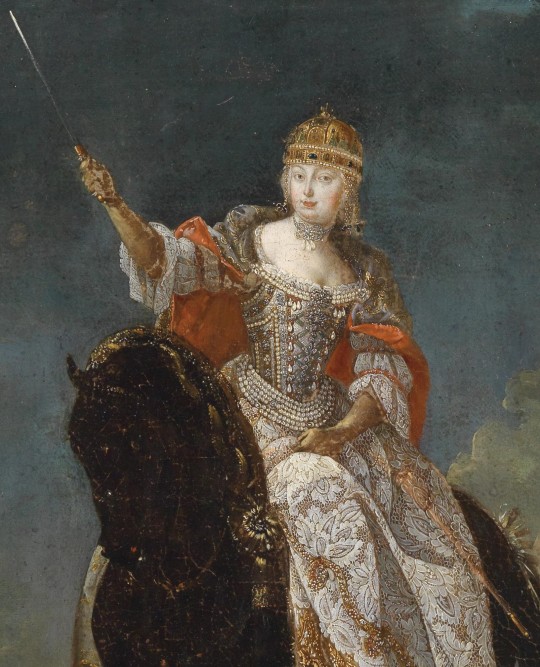

Maria Theresa, Archduchess of Austria, Queen of Hungary, Croatia and Bohemia, etc. reigned 1740-1780
Gaslight, gatekeep, girlboss
From anon: - chucked into ruling at age 23. while pregnant - no prep!!!! Prussia invades Silesia!!! Ministers fucking around for their own provincial interests instead of for the Whole !!!!! and she has to somehow cope with all of this .... - ALL WHILE being pregnant with Joseph (II) and we know that guy was just as ornery in utero as he was irl - she's everything! He (Francis) is just ....Ken. - YAS QUEEN rediversify that gene pool - originally reluctant to participate in the 1st partition of poland (who wants galicia let's be real)
Maximilian I, Holy Roman Emperor, reigned 1508-1519
Established marriage as politics
38 notes
·
View notes
Text
I’m making a chronological list of things I have seen/want to see! Any suggestions and add ons are awesome! I hope to have a comprehensive list spanning as much history as possible. I prefer series and miniseries to movies but I’ll take it all!!!! (Eventually i will add links to pages for info on the ones I’ve chosen and also add regional contexts. All dates are starting dates and there is much overlap!)
Also don’t judge me, I can’t do subtitles 😂 i spend all of my time obsessing over the words that i miss the action
I’ll mark what I’ve seen with an x
• Slave of Dreams (biblical Joseph)(1901 BC)
• The Red Tent (1700 BC)
• Tut (1332 BC)
• The Prince of Egypt (biblical Moses) (1290 BC) x
• The Story of Ruth (1220 BC) (biblical Ruth) x
• Helen of Troy (1200 BC) (Greek legend) x
• Iphigenia (1200 BC) (Greek legend) x
• The Trojan Women (1150 BC) (Greek legend)
• The Odyssey (1150 BC) (Greek legend) x
• King David (1140 BC) (biblical David)
• One Night With the King (biblical Esther) (518 BC) x
• The 300 Spartans (480 BC) x
• The Cleopatras (305 BC)
• Alexander (283 BC)
• Ancient Rome: The Rise and Fall of an Empire (146 BC)
• Julius Caesar (100 BC) x
• Spartacus (73 BC) x
• Rome (52 BC)
• Imperium: Augustus (49 BC)
• Cleopatra (48 BC) x
• Empire (44 BC)
• I, Claudius (24 BC) x
• (Life of Biblical Jesus) (1 AD) x
• Nero (41)
• Britannia (43)
• Boudica (60)
• Decline of an Empire (307)
• Agora (360)
• (Arthurian Legend) (5th-6th centuries) x
• Attila (406)
• Dark Kingdom: The Dragon King: Ring of the Nibelungs (Volsunga Saga) (450) x
• Tristan & Isolde (Post Arthurian Legend) (6th Century)
• Prince of Jutland (6th Century)
• Redbad (680)
• Vikings (793)
• The Gaelic King (800)
• The Last Kingdom (866)
• A Viking Saga (870)
• The 13th Warrior (922) x
• Valhalla Rising (1000)
• Vikings: Valhalla (1002)
• The Vinland Saga (1013)
• El Cid (1043)
• 1066 The Battle for Middle Earth (1066)
• The Pillars of the Earth (1123)
• Barbarossa (1176)
• Kingdom of Heaven (1183) x
• The Lion in Winter (1183)
• Ivanhoe (1192) x
• The Pagan King (13th century)
• Knightfall (1291)
• Braveheart (1296) x
• Outlaw King (1304)
• Robert the Bruce (1306)
• The Name of the Rose (1327)
• World Without End (1327)
• Black Death (1348)
• The Reckoning (1380)
• The King (1403)
• Medici (1409)
• The Messenger: The Story of Joan of Arc (1429)
• The Hollow Crown (1455)
• The White Queen (1464) x
• Maximilian (1477)
• The White Princess (1485)
• The Borgias (1490)
• The Spanish Princess (1501)
• Luther (1505)
• The Tudors (1516) x
• The Other Boleyn Girl (1521)
• The Headsman (1525)
• A Man For All Seasons (1529)
• Wolf Hall (1529)
• The Serpent Queen (1533)
• Lady Jane (1553)
• Reign (1557) x
• Mary, Queen of Scots (1561)
• Dangerous Beauty (1562)
• Elizabeth I (1579)
• The Merchant of Venice (1596)
• Shogun (1600)
• Gunpowder (1605)
• Mary & George (1612)
• Jamestown (1619)
• Silence (1630)
• The Devil's Whore (1638)
• To Kill a King (1648)
• Charles II: The Power and The Passion (1649)
• Versailles (1667)
• A Little Chaos (1682)
• The Crucible (1692) x
• Rob Roy (1713) x
• Black Sails (1715)
• The Great (1745)
• The History of Tom Jones: a Foundling (1749)
• Casanova (1753)
• Roots (1760’s)
• Belle (1761)
• Harlots (1763)
• Sons of Liberty (1765)
• John Adams (1770)
• The Duchess (1774)
• Marie Antoinette (1774) x
• Hamilton (1775) x
• Franklin (1776)
• Poldark (1783)
• A Respectable Trade (1787)
• Banished (1787)
• Northanger Abbey (1798)
• Sense and Sensibility (early 19th century)
• Pride and Prejudice (early 19th century) x
• Mansfield Park (early 19th century)
• Emma (early 19th century)
• Persuasion (early 19th century)
• Bridgerton (1813) x
• Belgravia (1815)
• Sanditon (1817)
• Gentleman Jack (1832)
• Harriet (1849)
• North and South (1851)
• The Empress (1853)
• The Luminaries (1860)
• Far from the Madding Crowd (1870)
• Deadwood (1870’s)
• The Buccaneers (1870’s)
• Victoria (1876)
• The Gilded Age (1882) x
• Miss Scarlet and the Duke (1882)
• The Knick (1900)
• Forsyte Saga (1906)
• Downton Abbey (1912) x
• Boardwalk Empire (1920)
• Black Narcissus (1939)
• Blitz (1940)
• The Crown (1947)
• A Suitable Boy (1951)
• Call the Midwife (1957)
• Mad Men (1960’s)
• Rustin (1963)
• Small Things Like These (1985)
#historical#historical fiction#historical dramas#historical timeline#a history in movies#a history in film#a history in tv#historical list#world history#historical queue
1 note
·
View note